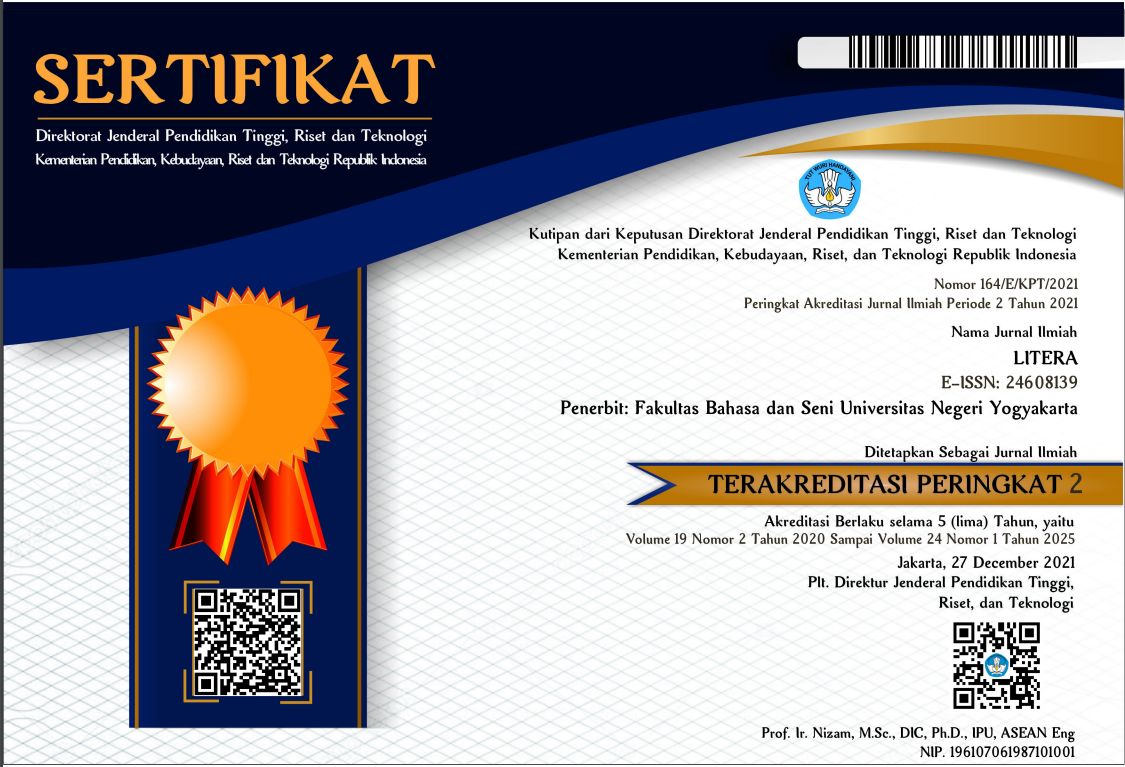Male allyship contributing to women’s empowerment in Hidden Figures
This study examined male allyship in Hidden Figures, focusing on how male characters support women’s empowerment in a racially and gender-biased workplace. Using the theory of male allyship proposed by Burrell & Morin (2025), it aimed to identify the forms of allyship and analyze their impact on women’s professional advancement. Employing qualitative content analysis, this research analyzed scenes that depict men’s supportive actions towards women facing structural discrimination. The findings revealed that male allyship took various forms, including fostering social capital through mentorship and sponsorship, confronting anti-diversity, equity, and inclusion (D.E.I) pushback with confidence and facts, leveraging resources to support development opportunities, clarifying that D.E.I did not promote unqualified candidates, positioning D.E.I as a competitive advantage, being visible advocates for inclusion, and sharing narratives that highlight the tangible benefits of D.E.I. These forms of allyship empowered women by creating opportunities, removing systemic barriers, and positioning diversity, equity, and inclusion as essential to organizational success. The study concluded that allyship grounded in fairness, respect, and integrity demonstrated that supporting women’s empowerment did not diminish masculinity or leadership credibility but instead strengthened collective achievement and built gender-inclusive environments.
Downloads
Amanda, K. R., Purwanto, N. R., Vianita, N. F. P. R., Nabila, P. S., & Anggraini, H. M. (2024). Analyzing The Movie “Hidden Figures” (2016): A Comprehensive Examination of Race and Gender Inequality. The Innovation of Social Studies Journal, 5(2), 116–120. https://doi.org/10.20527/iis
Boivin, N., Täuber, S., & Mahmoudi, M. (2024). Overcoming Gender Bias in STEM. Trends in Immunology, 45(7), 483–485. https://doi.org/10.1016/j.it.2024.05.004
Burrell, D. N., & Morin, S. L. (2025). The Importance of White Males with Power, Resources, and Influence as Allies Supporting Diversity in the US Workplace. Societies, 15(5), 1–22. https://doi.org/10.3390/soc15050128
Calvo-Iglesias, E., & Epifanio, I. (2024). Revisiting Male Allies in Mathematics and Physics Throughout History: Role Models for Men in STEM Education. Education Sciences, 14(5), 1–21. https://doi.org/10.3390/educsci14050535
Corbett, E., Barnett, J., Yeomans, L., & Blackwood, L. (2024). “That’s Just The Way It Is”: Bullying and Harassment in STEM Academia. International Journal of STEM Education, 11(1), 1–14. https://doi.org/10.1186/s40594-024-00486-3
De Souza, L., & Schmader, T. (2025). When People Do Allyship: A Typology of Allyship Action. Personality and Social Psychology Review, 29(1), 3–31. https://doi.org/10.1177/10888683241232732
Erskine, S. E., & Bilimoria, D. (2019). White Allyship of Afro-Diasporic Women in the Workplace: A Transformative Strategy for Organizational Change. Journal of Leadership and Organizational Studies, 26(3), 319–338. https://doi.org/10.1177/1548051819848993
Garrick, A., Johnson, W. D., & Arendt, S. W. (2024). Breaking Barriers: Strategies for Fostering Inclusivity in The Workplace. International Journal of Academic Research in Business and Social Sciences, 14(2), 128–152. https://doi.org/10.6007/ijarbss/v14-i2/20799
Geerts, J. M. (2024). Maximizing the Impact and ROI of Leadership Development: A Theory- and Evidence-Informed Framework. Behavioral Sciences, 14(10), 1–47. https://doi.org/10.3390/bs14100955
Kossek, E. E., Ladge, J., Little, L. M., Loyd, D. L., Smith, A. N., & Tinsley, C. H. (2024). Introduction to The Special Issue: Allyship, Advocacy, and Social Justice to Support Equality for Marginalized Groups in The Workplace. Organizational Behavior and Human Decision Processes, 183(1), 1–12. https://doi.org/10.1016/j.obhdp.2024.104336
Leuhery, F., Padang, N. S., Puspitasari, D., & Judijanto, L. (2024). Workplace Diversity and Inclusion: Strategies for Effective Implementation and Benefits to Organizational Culture. Dinasti International Journal of Economics, Finance and Accounting, 5(4), 4647–4653. https://doi.org/10.38035/dijefa.v5i4.3373
Madsen, S. R., Townsend, A., & Scribner, R. T. (2020). Strategies That Male Allies Use to Advance Women in the Workplace. Journal of Men’s Studies, 28(3), 239–259. https://doi.org/10.1177/1060826519883239
McDermott, R. C., Pietrantonio, K. R., Browning, B. R., McKelvey, D. K., Jones, Z. K., Booth, N. R., & Sevig, T. D. (2019). In Search of Positive Masculine Role Norms: Testing the Positive Psychology Positive Masculinity Paradigm. Psychology of Men and Masculinity, 20(1), 12–22. https://doi.org/10.1037/men0000160
Melfi, T. (Director). (2016). Hidden Figures [Movie]. 20th Century Studios.
Moser, C. E., Watkins, E. C., & Branscombe, N. R. (2024). Perceived Social Influence of Allied Men Drives Their Ability to Communicate Respect to Women in Male-dominated Fields. Group Processes and Intergroup Relations, 1(1), 1–22. https://doi.org/10.1177/13684302241257184
Nunan, J. L. R., Ebrahim, A. B., & Stander, M. W. (2023). Mentoring in the Workplace: Exploring the Experiences of Mentor–mentee Relations. SA Journal of Industrial Psychology, 49(1), 1–11. https://doi.org/10.4102/sajip.v49i0.2067
O’Connell, C., & McKinnon, M. (2021). Perceptions of Barriers to Career Progression for Academic Women in STEM. Societies, 11(2), 1–20. https://doi.org/10.3390/soc11020027
Okatta, C. G., Ajayi, F. A., & Olawale, O. (2024). Enhancing Organizational Performance through Diversity and Inclusion Initiatives: A Meta-Analysis. International Journal of Applied Research in Social Sciences, 6(4), 734–758. https://doi.org/10.51594/ijarss.v6i4.1065
Parmaxi, A., Christou, E., Fernández Valdés, J., Puente Hevia, D. M., Perifanou, M., Economides, A. A., Mazaj, J., & Manchenko, M. (2024). Gender Equality in Science, Technology, Engineering and Mathematics: Industrial vis-a-vis Academic Perspective. Discover Education, 3(1), 1–13. https://doi.org/10.1007/s44217-023-00082-7
Raj, P. (2024). The Power of Allyship: How Men Can Help Combat Gender Stereotypes at Work. Educational Administration: Theory and Practice, 30(09), 1022–1031. https://doi.org/10.53555/kuey.v30i9.10114
Ralph, C. S., & Nicol, A. (2023). Review: Male Allies at Work. Canadian Military Journal, 23(4), 74–76. https://doi.org/10.24908/cmj.v23i4.17694
Randel, A. E., Galvin, B. M., Gibson, C. B., & Batts, S. I. (2021). Increasing Career Advancement Opportunities Through Sponsorship: An Identity-Based Model With Illustrative Application to Cross-Race Mentorship of African Americans. Group and Organization Management, 46(1), 105–142. https://doi.org/10.1177/1059601120978003
Sabrina, A., Sumbayak, D. M., & Nasution, E. H. (2023). Double Discrimination towards Black Women in Hidden Figures and Where Hands Touch. LingPoet: Journal of Linguistics and Literary Research, 4(3), 34–41. https://talenta.usu.ac.id/lingpoet/article/view/13503
Sari, I., Surya, S., & Muhajir, F. (2022). The Unfair Treatment Issues towards African-American Women as Portrayed in Hidden Figures Film. Ilmu Budaya: Jurnal Bahasa, Sastra, Seni, Dan Budaya, 6(2), 564–578. https://doi.org/10.30872/jbssb.v6i2.5628
Schwartz, R., Williams, M. F., & Feldman, M. D. (2023). Does Sponsorship Promote Equity in Career Advancement in Academic Medicine? A Scoping Review. Journal of General Internal Medicine, 39(3), 470–480. https://doi.org/10.1007/s11606-023-08542-4
Sebastián-Tirado, A., Félix-Esbrí, S., Forn, C., & Sanchis-Segura, C. (2023). Are Gender-Science Stereotypes Barriers for Women in Science, Technology, Engineering, and Mathematics? Exploring When, How, and To Whom in An Experimentally-Controlled Setting. Frontiers in Psychology, 14(1), 1–23. https://doi.org/10.3389/fpsyg.2023.1219012
Siboro, M., Rangkuti, R., & Tarigan, B. (2023). Gender Ideology and Power Relations in Sahebjam’s Stoning of Soraya M: A Feminist Critical Discourse Analysis. Litera, 22(2), 149–158. https://doi.org/10.21831/ltr.v22i2.60447
Van Laar, C., Van Rossum, A., Kosakowska-Berezecka, N., Bongiorno, R., & Block, K. (2024). MANdatory - Why Men Need (and Are Needed for) Gender Equality Progress. Frontiers in Psychology, 15(1), 1–19. https://doi.org/10.3389/fpsyg.2024.1263313
Warren, M. A., Bordoloi, S. D., & Warren, M. T. (2021). Good for the Goose and Good for the Gander: Examining Positive Psychological Benefits of Male Allyship for Men and Women. Psychology of Men and Masculinity, 22(4), 723–731. https://doi.org/10.1037/men0000355
Yulisnawati, Y., & Kurniati, G. (2023). Gender-based Discrimination in “The Hidden Figures” Novel by Margot Lee Shetterly. Morphosis: Journal of Literature, 5(1), 43–64. https://openjournal.unpam.ac.id/index.php/MPS/article/view/38670
Zulfie, V., & Kusumayanti, D. D. (2023). Intertwined Gender Inequality in Desy Anwar’s “Growing Pains.” Litera, 22(3), 330–341. https://doi.org/10.21831/ltr.v22i3.63225
Copyright (c) 2025 I Gusti Ayu Mahatma Agung, Ni Luh Sutjiati Beratha

This work is licensed under a Creative Commons Attribution-ShareAlike 4.0 International License.

This work is licensed under a Creative Commons Attribution-ShareAlike 4.0 International License.























